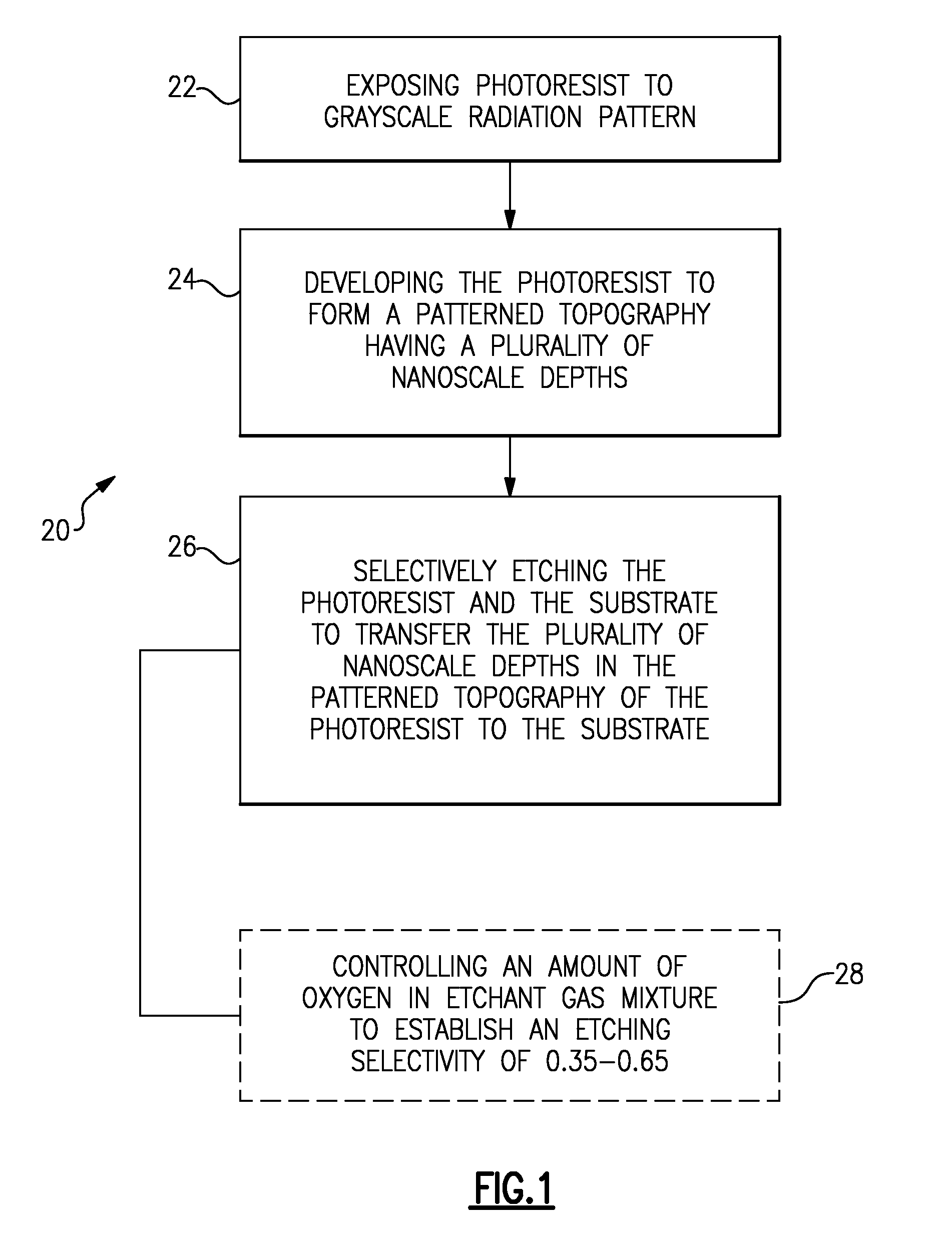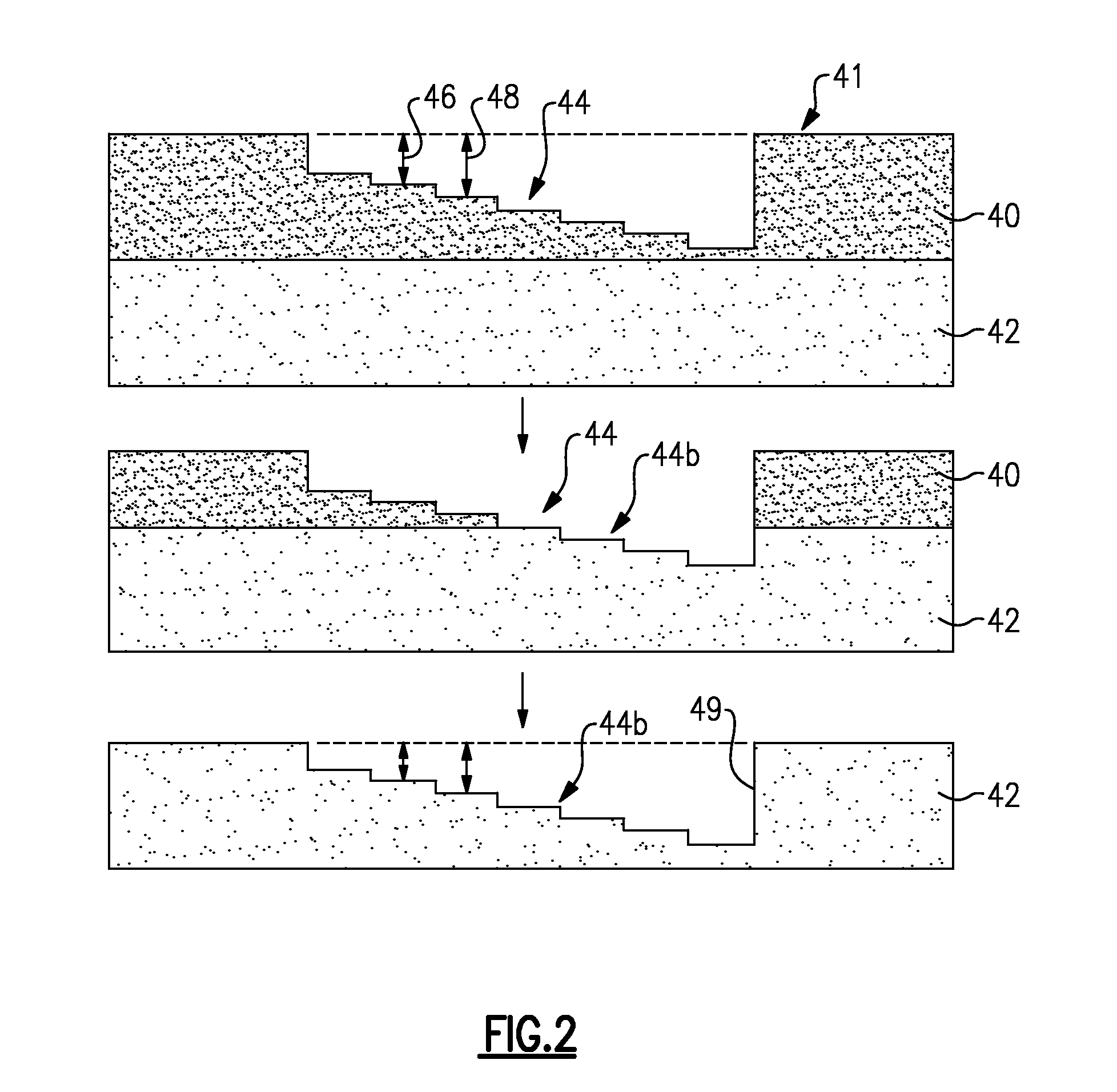Nanofabrication process and nanodevice
a nanofabrication and nanotechnology, applied in the field of nanofabrication process and nanofabrication device, can solve the problems of limiting the design and functionality of the device, limiting the dimensional limitations on serial patterning and alignment limit the geometry, number and size of channel depths that can be formed,
- Summary
- Abstract
- Description
- Claims
- Application Information
AI Technical Summary
Problems solved by technology
Method used
Image
Examples
Embodiment Construction
[0012]FIG. 1 illustrates an example of nanofabrication process 20 that may be used with a photoresist that is disposed on a substrate to form a nanodevice. As will be appreciated from the following description, the nanofabrication process 20 may be adapted to form a variety of different types of nanodevices that are unavailable using conventional techniques. In a few examples, the nanofabrication process 20 may be used to form a nanofluidic device, integrated circuit, nanomolding tool, resonator, or other device that would benefit from the ability to form complex three dimensional surface topographies defined by a plurality of nanometer scale or nanoscale critical dimensions. As an example, the terms “nanometer scale” or “nanoscale” may refer to a critical dimension or characteristic dimension of up to about one-hundred nanometers. In comparison, larger dimensions of up to one micrometer may be referred to as “submicrometer” and dimensions exceeding one micrometer and up to about on...
PUM
| Property | Measurement | Unit |
|---|---|---|
| step heights | aaaaa | aaaaa |
| surface roughness | aaaaa | aaaaa |
| thickness | aaaaa | aaaaa |
Abstract
Description
Claims
Application Information
 Login to View More
Login to View More - R&D
- Intellectual Property
- Life Sciences
- Materials
- Tech Scout
- Unparalleled Data Quality
- Higher Quality Content
- 60% Fewer Hallucinations
Browse by: Latest US Patents, China's latest patents, Technical Efficacy Thesaurus, Application Domain, Technology Topic, Popular Technical Reports.
© 2025 PatSnap. All rights reserved.Legal|Privacy policy|Modern Slavery Act Transparency Statement|Sitemap|About US| Contact US: help@patsnap.com



